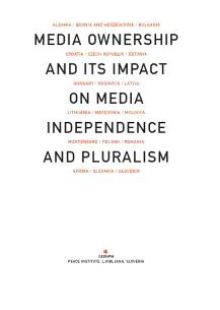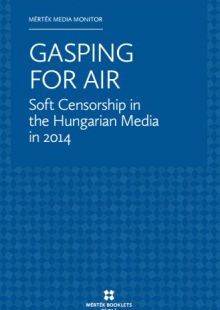Media Ownership and Its Impact on Media Independence and Pluralism, 2004

This book is an attempt to map ownership patterns and their effects on media pluralism and independence in the countries of South East Europe and EU member states from Central and Eastern Europe.
Media Ownership and Its Impact on Media Independence and Pluralism - the project, now published in book form, is an attempt to map ownership patterns and their effects on media pluralism and independence in the countries of South East Europe and EU member states from Central and Eastern Europe. The eighteen country reports and a regional overview are a result of the project organised by the South East European Network for Professionalisation of the Media (SEENPM). The project was conducted from July 2003 to June 2004 and was led by the Peace Institute in Ljubljana, itself a member of the SEENPM.
The aim of the project has been to examine media ownership in these countries, focusing on the regulatory framework and implementation mechanisms, privatisation, ownership structure of the main media ownership patterns and their impact on pluralism and independence of the media.
Eighteen researchers and journalists from Albania, Bosnia and Herzegovina, Bulgaria, Croatia, the Czech Republic, Hungary, Estonia, Kosovo/a,1 Latvia, Lithuania, Macedonia, Moldova, Montenegro, Poland, Romania, Serbia, Slovakia, and Slovenia, collected and analysed relevant data from October 2003 to February 2004. The reports, therefore, reflect the situation at the end of 2003 and the beginning of 2004. Since media markets in these countries are very dynamic, with ownership structures and the number of titles changing on a daily basis, and since media legislation is subject to frequent changes as well, certain data in these reports will inevitably be out-of-date at the time of publication. However, this does not essentially affect the patterns governing the functioning of media markets, the behaviour of regulators and media owners, or their influence on media pluralism and independence described in these reports.
Although a common methodology was used in drafting these reports, certain variations do occur. First, the authors were free to emphasise those features of the media ownership situation that best illustrated the peculiarities of their media markets. Second, (non)availability and (non)transparency of information on media ownership in certain countries resulted in variations in the structuring and selection of data.
Finally, separate reports for Serbia, Montenegro and Kosovo/a, although parts of the formally common state, were necessitated by the post-conflict situation and international protectorate in Kosovo/a, and separate media systems in these units.
The project has been implemented with the support of the Open Society Institute Network Media Program, the Guardian Foundation and the Fresta Program of the Danish Government.
It has been implemented in partnership with media centers and institutes, members of the South East European Network for Professionalisation of the Media, and some university departments and OSI national foundations in the respective countries.
The following institutions and the country reporters contributed to the implementation of the project:
The project advisory board contributed to drafting and implementation of the project with much deliberation. The board included Poul Erik Nielsen, University of Aarhus, Ian Wrigh and Mark Milner, the Guardian, Algirdas Lipstas, Open Society Institute, and Sandra B. Hrvatin, University of Ljubljana and the Peace Institute.
Finally, the project team at the Peace Institute that developed and led this extensive and inspiring endeavour, included Brankica Petković, Sandra B. Hrvatin, Lenart J. Kučić, Olga Vuković, Soren Klougart and Neva Nathigal.
The reports in this book and effort invested in their preparation and presentation derive from the belief that media ownership increasingly shapes the way in which the media relate to public interest and citizens' rights.


